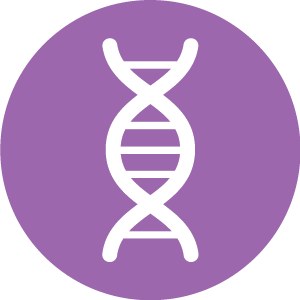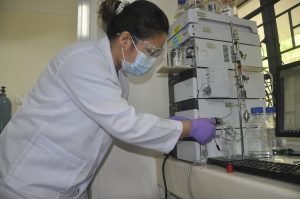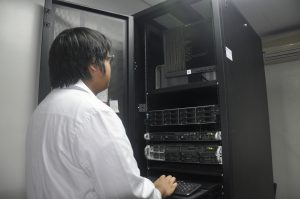Marine Biodiversity Resources and Information System (MBRIS)
Embracing the richness and potential of our country’s natural marine heritage
© Background photo: Klaus Stiefel
Embracing the richness and potential of our country’s natural marine heritage
© Background photo: Klaus Stiefel
Through the decades, the UP Marine Science Institute has diligently maintained reference collections showcasing the country’s rich marine heritage. This is now expanded into a research museum dedicated to understanding, conserving, and managing Philippine marine biodiversity.
A hub for collaborative research, expertise, knowledge, training, and education to catalyze management and conservation of marine biodiversity.
Enhance capabilities to document and sustainably utilize marine resources through the following:

Foundational repositories to support sustainable marine resources management, species discoveries, and conservation.

Decoding genetic information to uncover patterns of biodiversity, distribution, ecological and evolutionary processes to support marine genetic resource management.

Unlocking the full potential of marine biodiversity resources through their derivatives to develop new benefits for society (e.g. drugs, biotechnology).

Bridging marine biodiversity information with resources management and decision-making through ocean-to-cloud data pipelines and analytics.
Marine biodiversity collections and knowledge have served as foundations for conservation and resource management policies, as well as for breakthroughs in marine biotechnology and pharmacology. With MBRIS, we can do more — and we can do it faster.
For inquiries regarding this collection, you may contact Dr. Maria Celia D. Malay at mdmalay@msi.upd.edu.ph
The Invertebrates Core Collection comprises both dry and fluid-preserved non-hard coral invertebrates. This includes species from different phyla—sponges, soft corals, flatworms, mollusks, annelids, crustaceans, and echinoderms. Around 300 jars and 1000 dry lots have been catalogued, and hundreds more are being curated as more expeditions are being conducted by the Institute, particularly in the West Philippine Sea.
For inquiries regarding this collection, you may contact Dr. Maria Celia D. Malay at mdmalay@msi.upd.edu.ph.
The Hard Corals Core Collection has over 1,657 catalogued specimens of screlactinian corals. Several type specimens are housed here, including some of the holotypes of Dr. Francisco Nemenzo Sr. (the “Father of Philippine Coral Taxonomy”) as well as the holotype of Leptoseris kalayaanensis Licuanan & Aliño, 2009.
For inquiries regarding this collection, you may contact Dr. Rene A. Abesamis at raabesamis@msi.upd.edu.ph.
The Fish Core Collection started in the early 1970s and currently has 391 fish species belonging to 96 families in almost 700 jars. Fishes that inhabit shallow coral reefs dominate the collection due to their prominence in the Philippines and the Coral Triangle but lesser-known fishes from the deep sea (up to >4300 m) are also represented.
For inquiries regarding this collection, you may contact Aletta T. Yñiguez at atyniguez@msi.upd.edu.ph.
The Rhodora V. Azanza Marine Microalgal Culture Collection hosts microalgal species that are critical for studies on ocean productivity, biotechnology, and harmful algal blooms. To date, the collection includes 54 strains of 39 microalgal species isolated from various parts of the country, including Anda, Bolinao, Pangasinan, Masinloc, Manila Bay, and Anilao. It was established by Professor Emeritus Rhodora Azanza in 1998.
The Gregorio T. Velasquez Phycological Herbarium, internationally recognized through the herbarium code ‘MSI’, holds the largest herbarium collection of marine plants in the Philippines and the entire Southeast Asian region. Originally established by National Scientist Gavino C. Trono Jr. in 1974, MSI currently houses over 60,000 seaweed and seagrass specimens from the Philippines and abroad. It is named after National Scientist Gregorio T. Velasquez, who donated most of his collections to the herbarium. Aside from being a repository, MSI serves as education, training, and extension facility on marine plant biodiversity.
The Marine Natural Products Legacy Collection highlights the biodiversity and chemodiversity of the Philippine Seas. The legacy collection holds 6,106 microbial isolates, 5,052 extracts and fractions, and 237 pure compounds, serving as one of the foundations of the drug discovery program at the UP Marine Science Institute. It was established by Professor Emeritus Gisela Concepcion in the early 2000s.
The Seaweed Culture Laboratory and Gene Bank (SCL&GB) is an ex situ gene bank that holds a diverse array of eucheumatoids with a total of 577 cultures. The SCL&GB aims to preserve long-term genetic diversity, enable the selection of superior crops, and advance research in reproductive biology, ecophysiology, and phenotyping. It was established in 2012 as part of the seaweed research and development program of the Department of Science and Technology – Philippine Council for Agricultural and Aquatic Resources and Development (DOST-PCAARRD). Read more about the SCL&GB.
For inquiries regarding this collection, you may contact bml@msi.upd.edu.ph.
For inquiries regarding this collection, you may contact Dr. Wilfred John E. Santiañez at wjsantianez@msi.upd.edu.ph.
The UP Marine Macroalgal Reference Culture Collection (UPMMARCC) is the most diverse and widely sampled culture collection in the Philippines to date. The collection currently maintains over 500 seaweed strains or isolates from coastal and offshore areas such as the Kalayaan Island Group in the West Philippine Sea. It was established by Dr. Wilfred John E. Santiañez in 2018, to serve as a biobank of Philippine seaweed resources facilitating studies on the biodiversity, biology (especially life history and reproduction), and biochemistry of tropical seaweeds in support of the seaweed industry and the blue economy.

Molecular Ecology and Genetics

Marine Natural Products and Biotechnology

Marine Chemistry

Biodiversity Informatics Facility
MBRIS is a partner of the BRING network of collaborators.
© Background photo: Klaus Stiefel